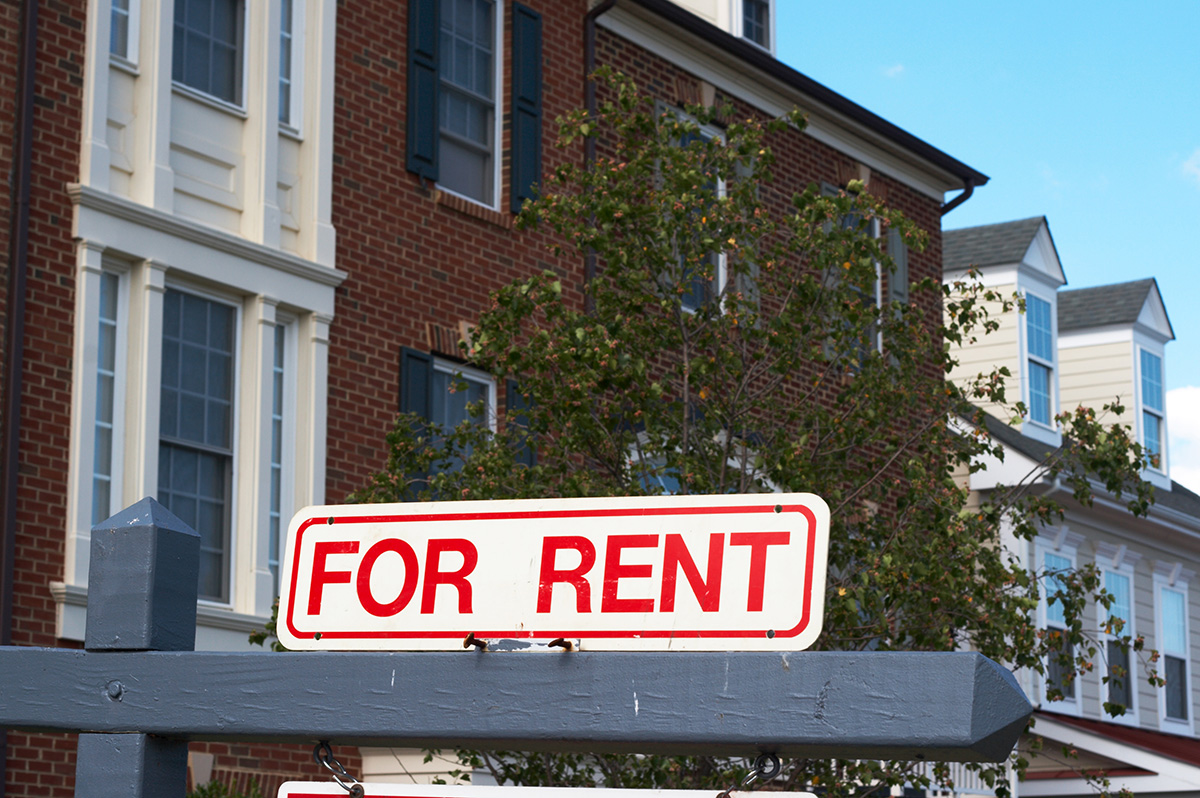Financial
LGBT community needs long-term care

By MICHAEL GLASSMAN
Special to the Blade
There is a huge need for long-term care insurance in the LGBT community simply because most members of the LGBT community do not have children to look after them in their older age. An article that appeared on Businesswire.com states:
“Having choices and protecting retirement assets and personal savings from long-term care costs should be important to everyone, however, it may be especially significant for the LGBT community. The reality is the LGBT community lacks the traditional support that married heterosexuals enjoy and as a result face a greater need for long-term care insurance.”
What unique considerations do gay and lesbian couples need to take into account when buying Long Term Care Insurance? Mainly, insurance companies have specific requirements for recognizing gay and lesbian partnerships. However, many blue-chip Long Term Care Insurance carriers offer the married, partner or spousal discount to gay and lesbian couples provided they have been in a committed relationship for at least one to three years (this varies from company to company). The married, partner, or spousal discount is significant with companies like Massachusetts Mutual Life Insurance Company (MassMutual) offering a 30 percent premium discount. Typically, discounts apply to each policy when both people meet the criteria for the covered partner discount. Generally, both partners must be approved and both must maintain coverage beyond the free look period. To be eligible for a covered partner discount, certain criteria must be met. Discounts are subject to state approval and may not be available in all states
You have likely seen the statistics that talk about the risk of needing long-term care as you age. And like most, you’ve told yourself “It will never happen to me.” You may very well be right. But what if you’re not? Rather than focus on the risk of an event happening to you, take a moment to consider the consequences that providing care over an extended period of years would have on the emotional, physical and financial well-being of those you have promised to take care of.
Many people believe that Medicare, Medicaid or the VA if they are veterans will pay for their care. These programs primarily cover medical procedures or rehabilitative care.
Long-term care requires custodial care. This is defined as the assistance or supervision that a person who is physically or cognitively impaired needs to get through the day. With few exceptions, no federal or state program will pay for custodial assistance over an extended period of years. Therefore, the family has to pay out of pocket.
No one can guarantee that you won’t need care. But you can create a plan that will protect your partner and family.
The plan should preserve your family’s emotional and physical well being by allowing them to hire professionals to provide care:
The plan should allow you to preserve your retirement portfolio.
Once this plan is in place, long-term care insurance can be an effective solution.
Implemented correctly it provides a stream of income that pays for professionals to help keep you at home and/or residential alternatives such as assisted living facilities or nursing homes.
This allows the following:
• Your family to supervise rather than provide your care, helping to protect their emotional and physical wellbeing.
• Your retirement income to keep funding your lifestyle, therefore allowing you to keep your financial promises
• Helps you preserve the financial viability of your surviving partner or children who may need an inheritance.
Long-term care describes the care you need if you become incapacitated, either physically or cognitively, due to a degenerative disease or incident such as Parkinson’s, stroke, diabetes, or Alzheimer’s.
These conditions severely compromise your ability to get through the most basic of daily routines. In reality, the need for long-term care is a safety issue that requires 24 hour a day attention.
Since you are no longer safe, those you love are forced to reorient their lives to make sure that you are. This change can have a devastating impact on their emotional and physical well-being.
There are unique tax advantages that long-term care insurance offers business owners and/or their employees.
If you have a C-Corp you have the following benefits:
• 100 percent of the premium is deductible as an ordinary business expense for all employees regardless of percentage of ownership. IRC 162(a).
• The company can also deduct 100 percent for the employee’s spouse (check with your CPA) and the couple’s tax dependants, whether or not they are considered employees. IRC 162(1),162(1)(2), 213(d)
• The premium is excluded from the employee’s income and therefore not subject to federal income tax withholding, social security, Medicare and federal unemployment taxes. IRC106(a), 105(b)
• The company is not subject to anti-discrimination rules; it can discriminate by class, offering long-term care to some employee classes but not to others. Treasury regulation 1.105-5, 1.106-1
If you have a Subchapter S-Corp:
• Your company can pay and deduct the actual long-term care premium IRC 162(a)
• The premium is considered income to the insured so a W-2 and 1120S is issued. Revenue ruling 91-26
• The shareholder/insured includes the W-2 amount on the 1040 and pays self-employed taxes. He than can deduct the eligible premium and pays taxes on the balance. IRC 162(1), 213(s)(1)(D), 213(d)((10)
• The company is not subject to anti-discrimination rules; it can discriminate by class, offering long-term care to some employee classes but not to others. Treasury regulation 1.105-5, 1.106-1
If you have a Partnership:
• The partnership can pay the actual premium and deduct it as a normal business expense. A K-1 for the amount is issued to the partner who includes it on form 1040 for self employment taxation. IRC 162(a), 707(c)
After paying self-employment tax, the insured deducts the eligible premium based on age. The balance is subject to taxation. IRC731(a)(1)
Partnerships can discriminate by class, offering long-term car insurance to some employee classes but not to others because group long-term care insurance plans are not subject to nondiscrimination rules like other plans. Treasury regulation 1.105-5, 1.106-1
Self-Employed Individuals/Sole Proprietors:
• Your company can pay the long-term care insurance premium and fully deduct it. IRC 162(1)
• The actual premium is reported on your 1040 and subject to self employment tax. IRC 162(1)(2)(c), 213(d)
• After paying self employment tax you deduct the eligible premium based on your age; the balance, if any, is considered income.
You can deduct the premiums paid for employees from business income. IRC 162(a)(1)
The Sole Proprietor can discriminate by class offering long-term care insurance to some employee classes but not to others. Treasury Regulation 1.105-5, 1.106-1
Non-self employed individuals:
• The eligible premium is based on your age.
• You must file an itemized return and list the eligible premium as a medical expense.
• The first 7.5 percent of your adjusted gross income must be subtracted from the total medical expenses listed on your return. The balance, if any, is deducted from your gross income. IRC 213(d)(10)
• The eligible premium can be paid from a Health Saving Account or a Health Reimbursement Account without itemizing and without being reduced by the adjusted Gross Income exclusion. IRC 223(d)(2)(A), IRC Notice 2002-45 for HSA
Your employer can pay the actual premium for your long-term care insurance policy with pre-tax dollars and the premiums are excluded from are excluded from income. Benefits are also tax free.
The value of long-term care insurance
It is the ability to protect the emotional, physical and financial wellbeing of your family should you ever become frail and need care over a period of years.
It does so by providing a stream of income that pays for that assistance, allowing those you love to supervise rather than provide physical care—a great relief during a truly difficult time.
Talk to anyone who has had the experience with long-term care and he or she will tell you that providing direct care can be very emotionally and physically stressful.
Since care is now paid for, there is no need to reallocate your income, so it remains in place to pay for the financial commitments you have taken into retirement. Just as important, your investment portfolio remains intact allowing your tax plan to execute properly and preserves the estate for your surviving partner children or others.
(The information provided is not written or intended as specific tax or legal advice and may not be relied on for purposes of avoiding any Federal tax penalties. Individuals are encouraged to seek advice from their own tax or legal counsel. Special thanks to the Corporation for Long Term Care Certification CRN 201404-159476)
Real Estate
Stress-free lease renewals during winter months
A season when very few tenants typically move

January has a way of waking everyone up. After weeks of holiday noise, travel, family visits, and a general blur of activity, the new year arrives with its usual mix of resolutions, optimism, and responsibility. People start looking at their calendars again. To-do lists reappear. And tucked away in there is something many tenants didn’t give much thought to in December, their lease renewal.
Renewals in winter matter more than most people realize. It is a season when very few tenants typically move. The weather is unpredictable, schedules are tight, and most people are trying to regain their footing after the holidays. Because of this, renewal conversations tend to be more productive and more grounded.
Many landlords think of spring and summer as the heart of leasing season, and while that’s certainly when moves are most common, winter renewals hold their own kind of importance. A well-timed renewal does more than keep a unit occupied. It provides predictability for the year ahead, strengthens relationships, and reduces the costly turnover that smaller landlords want to avoid.
In my experience, tenants who might hesitate during another time of year are often relieved to secure housing before the pressures of spring and summer begin. Uncertainty is one of the prime causes of unnecessary turnover. If tenants don’t hear from their landlord, they often start browsing listings “just in case,” or asking friends about other options. Once that door is opened, it can be hard to close. Initiating the renewal process early helps anchor tenants before doubts start creeping in.
Tenants often make clearer decisions in January than they would in November or December. During the holidays, people are distracted and stretched thin; emails are skimmed, not absorbed; and anything involving planning often gets deferred until “after the new year.” When tenants return home in January, they have a better sense of their plans, their budget, and their needs for the coming months. This makes it a much easier moment to start or restart a renewal conversation.
The practical reality is that most tenants don’t want to move in the winter. Who wants to haul furniture across icy sidewalks or deal with last-minute moving delays due to storms? Beyond the weather, January is a time when people are reorganizing finances, filing paperwork, and settling into routines. The thought of a major transition simply doesn’t fit. Landlords can use this natural reluctance to create a smoother, more collaborative renewal process.
One thing I’ve learned over the years is that clarity is a landlord’s best tool. Tenants don’t need lengthy explanations, legal jargon, or complicated attachments. They simply want to know:
- Are the terms changing?
- If so, how?
- What does their timeline look like?
- Would the landlord consider another set of terms?
A concise, well-laid-out renewal offer does two things. First, it demonstrates transparency, which builds trust. Second, it keeps the conversation focused and productive. When tenants understand exactly what’s being proposed, there is less back-and-forth, fewer misunderstandings, and a quicker path to a signed agreement.
Tenants are more receptive when they feel they’re being treated fairly and openly. If there’s a rent adjustment, a brief explanation helps tenants see the reasoning behind it, such as increased operating costs, significant maintenance completed during their stay or alignment with the market.
Lease renewals are moments of connection. The best landlord-tenant relationships are built over time through small exchanges, transparency, and mutual respect. Renewal season offers an opportunity to reinforce that.
A simple acknowledgement of the tenant’s care for the home or their timely payments can set a positive tone. Even a short note of appreciation signals that you see them not as a lease term, but as a partner in maintaining the property. These gestures cost very little but create a sense of goodwill that carries through maintenance requests, policy reminders, and everyday communication.
Many landlords underestimate how much tenants value being treated as individuals rather than account numbers. A thoughtful, personal touch during the renewal process can make a tenant feel recognizednand more inclined to stay.
Renewals aren’t only about securing another term lease.They’re also a natural moment to check in on the overall health of the property and the tenant’s experience. J anuary provides a quiet space to step back and ask:
• Are there maintenance concerns the tenant hasn’t mentioned yet or that have not been fully resolved?
• Is the property due for upgrades or any preventative work?
• Are there responsibilities or expectations worth revisiting?
These conversations don’t need to be long or formal, but they help prevent the small issues of one year from becoming the larger problems of the next. A tenant who feels heard is more likely to take good care of the home, communicate proactively, and renew again in future years.
While landlords must maintain structure and protect their assets, a bit of flexibility can go a long way during the renewal process. Tenants are often rebalancing budgets after holiday spending. Offering digital signatures, Having brief calls to clarify terms, being flexible, or a few extra days to make a decision can ease stress without compromising the landlord’s position.
Flexibility is about recognizing human realities. Most tenants appreciate being treated with patience and professionalism, and often reward that consideration with prompt decisions and smoother communication. There are many reasons why a full year renewal may not coincide with their plans. Being able to work out mutually agreeable renewal terms makes the solution a win for both parties.
For landlords, especially smaller ones, stability is the foundation of successful property investing. A vacant unit, even briefly, costs more than most people realize. There are marketing expenses, cleaning, repairs, lost rent, and the unpredictable timeline of finding the right new tenant. By contrast, securing a renewal with an existing reliable tenant protects cash flow, reduces risk, and creates predictability in planning.
January renewals, when handled well, deliver this stability right at the beginning of the year. They give landlords a clear roadmap for budgeting, maintenance scheduling, and forecasting. They also give tenants the security of knowing exactly where they stand, which reduces stress on both sides.
A lease renewal may seem like a small moment in the life of a property, but in practice, it shapes the experience of the year ahead. When the process is organized, honest, and respectful, it sets a tone that carries through every interaction until the next renewal date.
January is a time to consider leaning into this approach. The pace is slower, the mindset is clearer, and both landlord and tenant are ready to step into the year with more intention. A renewal handled thoughtfully now paves the way for a smoother, quieter, more predictable twelve months, something every landlord and every tenant can appreciate.
Scott Bloom is owner and senior property manager at Columbia Property Management.
Real Estate
Child- and pet-proofing your home for the holidays
It isn’t about being perfect but about being prepared

The holidays are meant to be joyful, cozy, and full of laughter — but if you have young children or pets, they can also feel a little chaotic. Twinkling lights, shiny decorations, guests coming and going, and tables full of tempting food can turn your home into a wonderland of curiosity and mischief. The good news? With a little thoughtful planning, you can keep the holiday magic alive while making your home safer for everyone who lives there.
There’s something oddly comforting about movies where animals go to war with holiday decorations, turning carefully strung lights and perfectly placed ornaments into chaos. Whether it’s a mischievous dog tangled in tinsel or a curious cat launching a full-scale assault on a Christmas tree, these scenes tap into a universal experience for pet owners.
The humor comes from the contrast: the human characters are trying to create warmth, tradition, and picture-perfect cheer, while the animals see the decorations as toys, obstacles, or personal enemies. The resulting destruction — trees tipping over, ornaments shattering, lights blinking out—feels exaggerated but relatable, especially during the already hectic holiday season.
Let’s start with decorations because they tend to be the biggest attraction. Ornaments sparkle, garlands dangle, and everything seems designed to be touched, pulled, or tasted. If you have little ones or pets, consider placing your most fragile ornaments higher on the tree and using shatterproof options on the lower branches. Tinsel and ribbon may look festive, but they can be dangerous if swallowed, so skipping them or keeping them well out of reach is a simple way to reduce risk without sacrificing style.
Holiday lights are another favorite fascination. Before hanging them, take a few minutes to inspect each strand for frayed wires or broken bulbs. Secure cords along walls or behind furniture so they’re harder to grab or chew and unplug them when you leave the house or head to bed. Not only does this help prevent accidents, but it also gives you one less thing to worry about during a busy season.
The Christmas tree itself can become a focal point for exploration. Make sure it’s sturdy and well-anchored so it doesn’t tip if a toddler tugs on a branch or a pet decides to investigate. If you use a real tree, cover the water base since tree water can contain additives that aren’t safe if consumed. For artificial trees, keep an eye out for loose pieces or needles that could become choking hazards.
Food is a big part of holiday celebrations, and it’s also one of the most common sources of trouble. Many traditional treats—like chocolate, grapes, raisins, alcohol, and foods containing xylitol—are dangerous for pets. Keep plates and serving dishes up high, secure the trash can, and gently remind guests not to slip pets or kids “just a little bite” without checking first. For children, be mindful of hard candies, nuts, and small treats that could pose choking risks.
Candles and fireplaces add warmth and charm, but they deserve extra caution. Flameless candles are a wonderful alternative if you want ambiance without worry. If you do use real candles, place them well out of reach and never leave them unattended. Fireplaces should always have a sturdy screen or gate, especially with crawling babies or curious pets nearby.
Holiday gatherings bring wonderful energy into your home, but they can also create new challenges. Doors opening frequently make it easier for pets to slip outside, so consider setting up a quiet, comfortable space where they can relax during busy get-togethers. This can help reduce stress for them and give you peace of mind. For children, stair gates, locked cabinets, and clear boundaries can help prevent accidents when there’s extra excitement in the air.
New toys and gifts are another thing to watch closely. Packaging, twist ties, plastic wrap, and especially button batteries should be cleaned up promptly. These items are easy to overlook in the excitement of gift-opening but can be dangerous if swallowed. Taking a few minutes to tidy up as you go can make a big difference.
Lastly, try to keep routines as steady as possible. The holidays naturally disrupt schedules, but familiar mealtimes, naps, walks, and bedtime rituals help children and pets feel secure. A calmer household often means fewer accidents and a happier experience for everyone.
At the end of the day, child- and pet-proofing your home for the holidays isn’t about being perfect but about being prepared. A few small adjustments can help you relax, enjoy your guests, and focus on what truly matters: creating warm, happy memories with the ones you love. When your home feels safe, the holidays feel even sweeter.
Valerie M. Blake is a licensed Associate Broker in D.C., Maryland, and Virginia with RLAH @properties. Call or text her at 202-246-8602, email her at [email protected] or follow her on Facebook at TheRealst8ofAffairs.
Real Estate
In real estate, trust the process
With rates coming down, we could see spring surge in buyers

The average 30-year mortgage rate is falling, little by slowly. With predictions that the rate will continue to adjust downward in the next year or two, there may be a busier spring market than we have seen in the last few year, especially for the DMV market, which has been reeling from thousands of layoffs this past year. The frenzied activity resulting from interest rates close to 3% for some borrowers will probably not occur; however, this spring could add up to be a few notches busier than the last.
What does this mean for buyers and sellers? Lender Tina Del Casale with Waterstone Mortgage says she has seen “low to mid 6’s as the average for conventional loans.” If rates continue downward into the 5% range, there may be more activity than we saw in the last year or two. This could release a little bit of pent up demand.
Many buyers will have found that for whatever reason, their current home is not meeting their needs. Sellers may want to finally take the plunge and put a for sale sign in the yard and online, now that they might find a more reasonable rate on their next home. This winter can be an opportunity to assess financial situations, home conditions, and optimize one’s chances to have a sale with more agreeable terms, or put one’s best foot forward in an offer. In addition to checking with a lender or favorite handy person, let’s review what sellers and buyers typically spend their energy negotiating while enjoying the lovely process called “going under contract”:
- Timelines – Sellers might want to have their house solidly under contract (papers signed, thumbs up from the lenders, all inspection items decided upon and settled) so that they can put an offer down on a new home, and then negotiate that timeline with the other sellers. Remember, making a move is not only about the buyer taking possession of a new home, but also about the sellers figuring out their situation as well.
- Sale Price – unfortunately for buyers, in the eyes of most sellers, “money talks.” So, in a non-competitive situation, a seller might be happy to just get one offer at a price that was within the desired range. As soon as another interested buyer enters the equation, it can become a little bit like RuPaul’s Drag Race, and one will have to lip sync for one’s life, honey! And only one buyer will get to hear the words, “condragulations!”
- Tone/Vibes/Energy in the Room – Remember: Human beings are emotional creatures. All of us have feelings. And all of us want to put energy into situations where we feel appreciated, where a level of self-awareness exists, and a sense that each side is trying one’s hardest to act in good faith. The best transactions I saw were where a little grace was the “grease on the wheels” of the transaction. Occasionally, a buyer had cold feet and wanted to see the unit a few more times before the settlement date, or a seller forgot to scrub the bathroom with a little extra elbow grease before the settlement date. Life happens; misunderstandings can occur. A wise therapist once said: “You don’t have to like it, but can you allow it?” The tone of one or both parties in the transaction can be what seals the deal, or results in one party exiting the contract. (In the case of the dirty bathroom, the seller left a check with the title company for the buyer to pay a housekeeper to come clean what they couldn’t.)
Joseph Hudson is a referral agent with Metro Referrals. He can be reached at 703-587-0597 or [email protected].
-

 Colombia5 days ago
Colombia5 days agoGay Venezuelan man who fled to Colombia uncertain about homeland’s future
-

 Arts & Entertainment5 days ago
Arts & Entertainment5 days ago2026 Most Eligible LGBTQ Singles nominations
-

 District of Columbia4 days ago
District of Columbia4 days agoKennedy Center renaming triggers backlash
-

 District of Columbia5 days ago
District of Columbia5 days agoNew interim D.C. police chief played lead role in security for WorldPride














